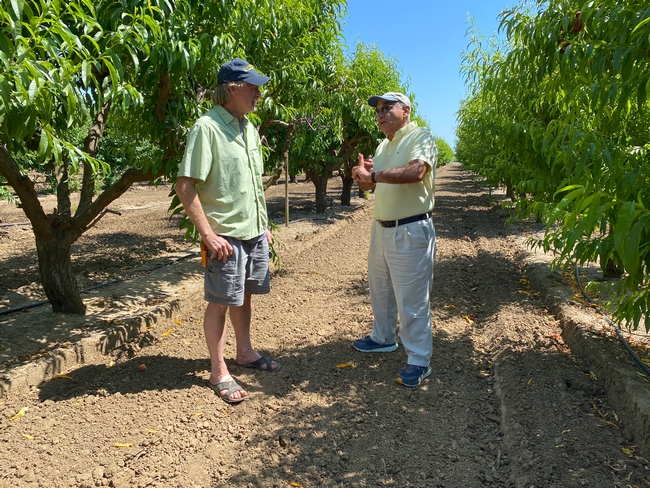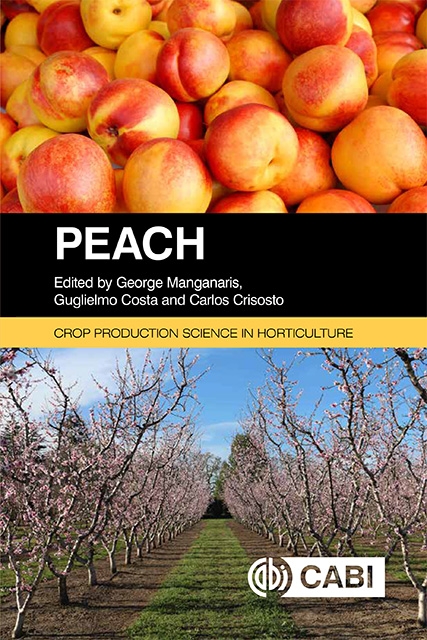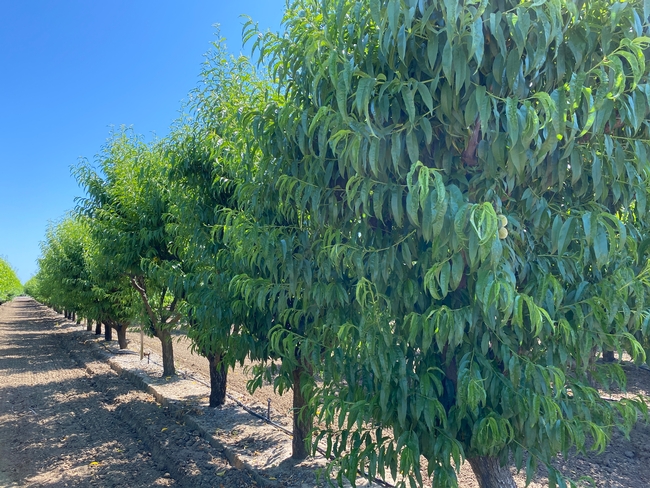Peach book guides growing quality fruit from planting to beyond harvest
Crisosto and team publish handbook for growing peaches and maintaining quality for canning
In an experimental orchard a few miles west of the UC Davis campus, Thomas Gradziel plucked a nearly ripe nectarine from one of the trees. He whipped out a pocketknife and sliced off juicy chunks for Carlos Crisosto to taste. Both are orchard crops experts in the UC Davis Department of Plant Sciences, and both love peaches.
The two made appreciative sounds as they pulled the fruit's flavor across their palates, discussed how this nectarine variety compared to other varieties, and quickly turned to details of production and orchard management.
Crisosto and Gradziel have poured decades of experience with orchard fruits into creating “Peach,” a landmark handbook on cultivation and postharvest considerations published by CABI. The book is part of the international academic publisher's Crop Production Science in Horticulture series.
Peach gives growers basic information that can reduce their production risks, boost profits and help them face issues such as climate change and a shifting world market, CABI writes in the book's description.
“This will still be the definitive text for probably the next 20 years,” said Carlos Crisosto, who is one of the book's editors and authors. He is both a distinguished professor in the UC Davis Department of Plant Sciences and UC Cooperative Extension specialist in consumer quality and postharvest technology in UC Agriculture and Natural Resources.
Chapters also cover rootstock, cultivars, water management, fertilization, fruit growth and thinning, testing for maturity, and supply chain management after harvest. Several more chapters cover pests and diseases, maintaining fruit quality, nutritional aspects and canning.
“This book was a pleasure to contribute to, as it includes information from expert colleagues plus exciting new ideas and applications from our recent researchers,” said Gradziel, a UC Davis professor and plant breeder.
In California, farmers cultivated 36,800 acres of peaches, producing 505,000 tons of fruit worth more than $378 million in 2021. While the crop ranks 23rd in the state, based on cash receipts, California is the No. 1 producer of peaches for the entire United States, according to the California Department of Food and Agriculture.
Crisosto teamed up with colleagues George Manganaris in Cyprus and Guglielmo Costa in Italy to edit this volume, which takes an international look at a growing industry.
Fun fact mentioned in Peach: Nectarines are a peach without the fuzz, a genetic variation. “Most people don't know that!” Crisosto said with a laugh.
Peach contains more fun facts: Peaches are a member of the rose family, China is the world's largest producer of the fruit (growing 60% of the global crop), and industry leaders yearn for trees with a flat canopy so the fruit would ripen all at about the same time and could be harvested easily by machine, reducing the pressure of finding people to pick the fruit by hand.
Peach is available as an e-book and in paperback. Both cost $80 each.
To preview and order the e-book chapters, visit bit.ly/PeachBook. Get a 20% discount with the code CCAB20 during online checkout. The 424-page paperback can be ordered at https://bit.ly/PeachPaperback.
The publisher's sales staff for North America and South America are based in Herndon, Virginia, and can be reached at StylusMail@PressWarehouse.com, (703) 661-1581 or (800) 232-0223.
This Peach book complements our previous publication, “Manual on postharvest handling of Mediterranean tree fruits and nuts,” Crisosto said. “These two publications contain state-of-the-art production and postharvest information that support our research and information centers, UC ANR mission and our academic teaching.”



